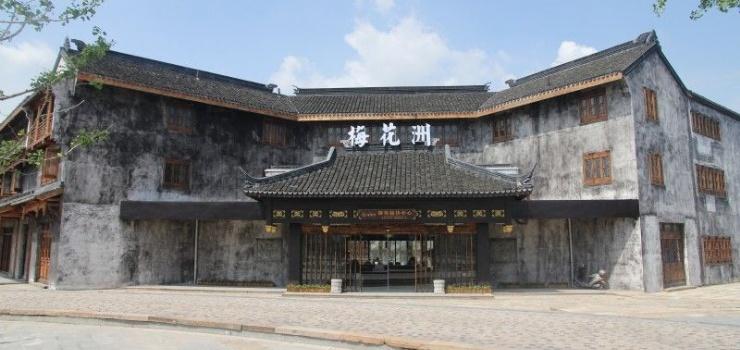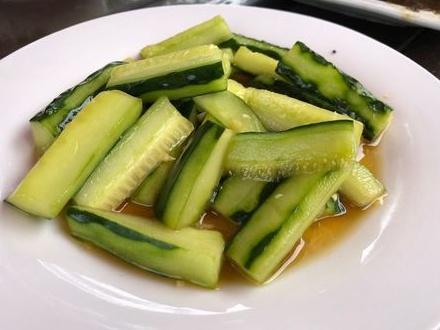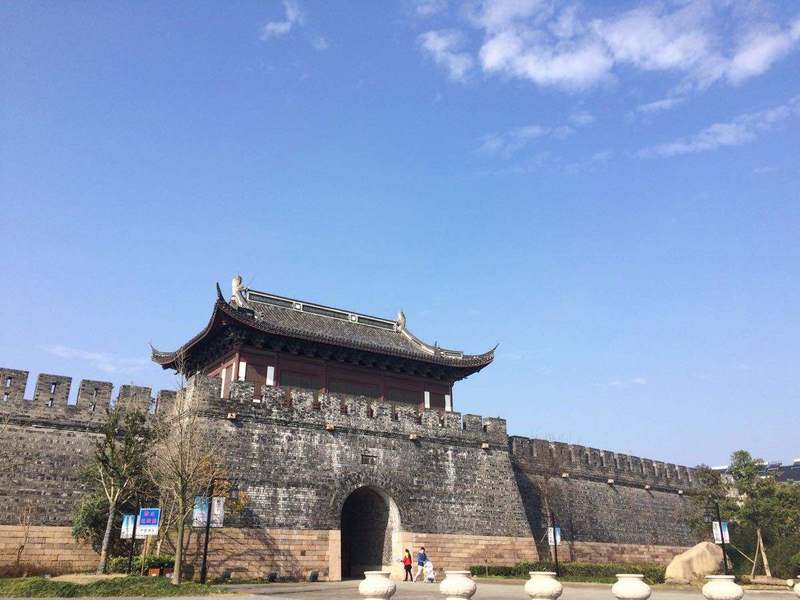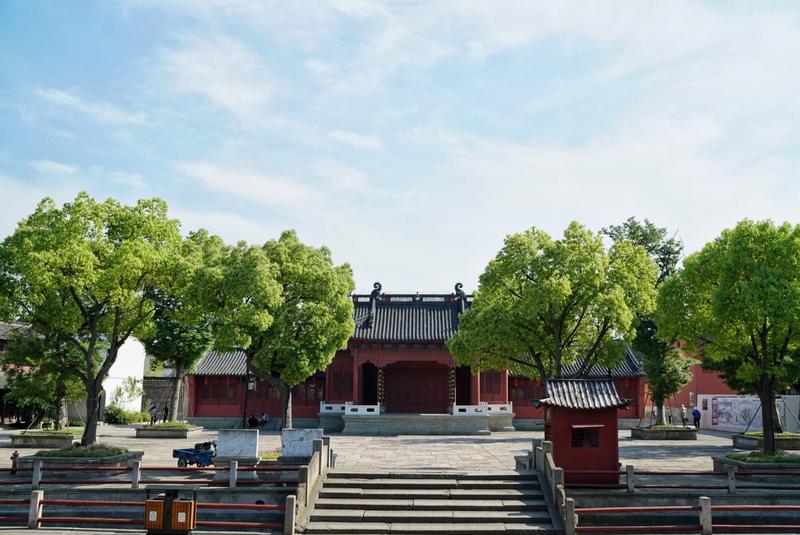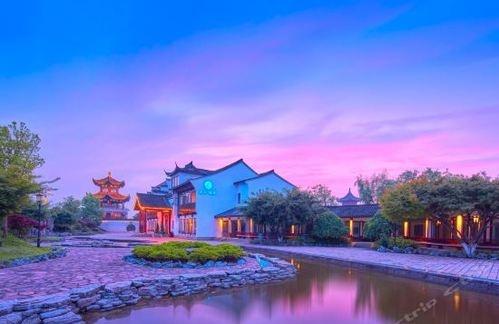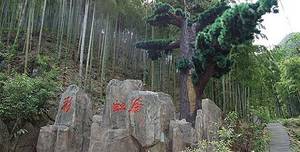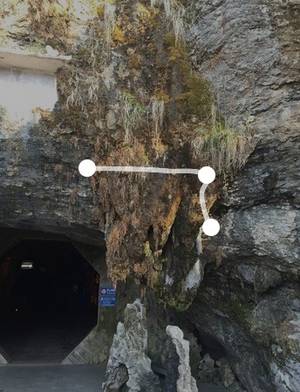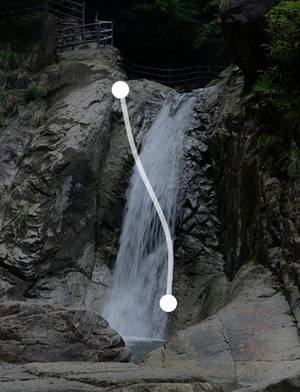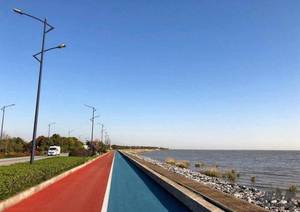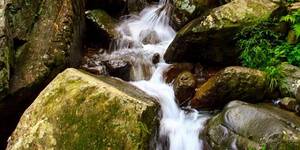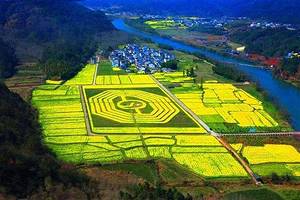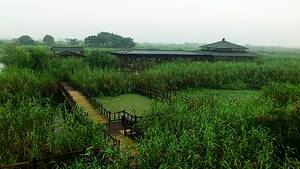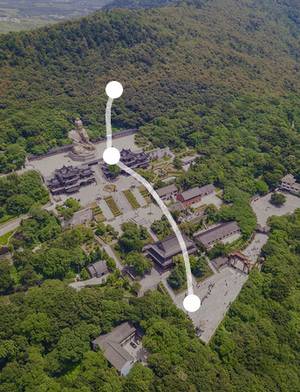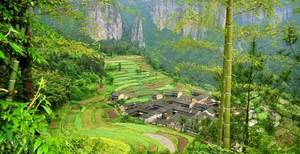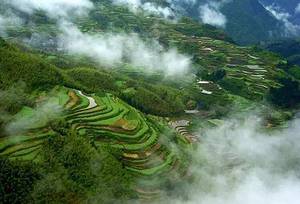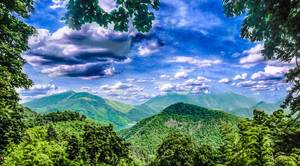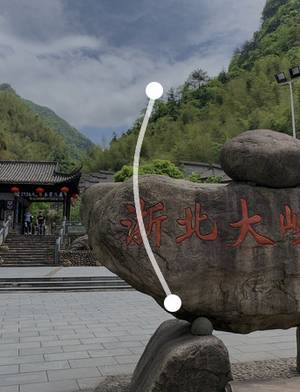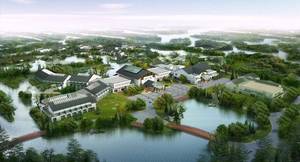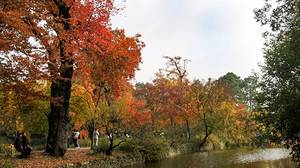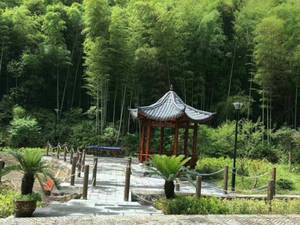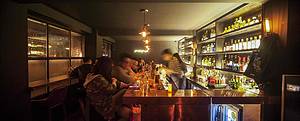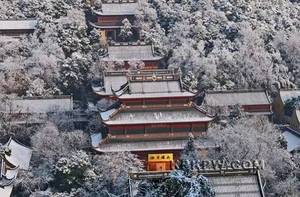Experience bamboo rafting in Shuangxi River
2 cities |
9 attraction(s) |
total distance 70
km
 TIPS
TIPS
Day1
Day2
Day1: Jiaxing
6 attraction(s) ·
69 km
1
Meihuazhou is located in Fengqiao Town, Nanhu District, Jiaxing City, Zhejiang Province. It is the birthplace of Majiabang Culture, Songze Culture, and Liangzhu Culture. After more than 1,500 years of wind and rain, the river channels in the Meihuazhou area have been well preserved, making it a remarkable place. The Meihuazhou scenic area covers an area of 12,000 mu and reproduces the original appearance of the "Eight Scenes of Meihuazhou" including Jinguang Cypress, Bodhi Tree, Yijian Spring, Sifoshan, Meihuazhou, Qinglian Pond, Xianghua Bridge, and Baiyun Hill. It includes historical and cultural sites such as the Majiabang Culture, Songze Culture, and Liangzhu Culture relics, as well as the Stone Buddha Temple and other historical and cultural attractions, and the millennium ancient Ginkgo biloba tree and Sanbu Liangpang Bridge, which are also typical cultural landscapes of the southern Yangtze River region. The scenic area has also pioneered a large-scale Zen meditation center, providing leisure projects such as four-season agricultural tourism, riverside tea tasting in the long corridor, and academy to learn about the spring and autumn, truly becoming a block that combines the experience of Zen meditation, spiritual retreat, and seclusion. It is only a short distance from Shanghai, Hangzhou, Suzhou, and Ningbo, making Meihuazhou an ideal destination for many urban dwellers due to its unique regional location. With the core concept of "Dynamic Water Town, Idyllic Jiangnan," the Meihuazhou scenic area aims to create a one-stop cultural experience area of Jiangnan culture, providing tourists with a refined taste of Jiangnan charm.
1
km
2
In the shop under the bridge, you can sit by the river and dine. The scenery is nice, the taste is good, and the price is affordable. The only drawback is that there are not many dishes, but the service attitude is good.
66
km
3
Yanguan Tide Watching Scenic Area is located on the north bank of the Qiantang River in the south-central part of Haining City, Zhejiang Province. Here, visitors can enjoy the beautiful natural landscapes and experience the rich historical and cultural atmosphere.
The scenic area consists of two parts: Yanguan Ancient Town and Guanchao Scenic Park. Guanchao Scenic Park attracts numerous tourists to admire the spectacular spectacle of the Qiantang tidal bore.
Moreover, Yanguan has a rich historical and cultural heritage, compelling legends, and brilliant culture. This makes the charm of this scenic area infinite, and it can be called a millennium day trip.
If only strolling in the ancient town without entering the courtyard, there is no need to purchase a ticket. However, if you want to watch the tidal bore in Guanchao Scenic Park, you can purchase a park ticket or directly buy a scenic area joint ticket.
1
km
4
Jinyong Academy, located in Nanhuzhen, Xiuzhou District, Jiaxing City, Zhejiang Province, China, is a historical and culturally rich classical building and an important cultural attraction. It is named after the famous martial arts novelist Jinyong, who also served as a visiting professor in the academy.
Jinyong Academy was first built during the Xuande period of the Ming Dynasty and was originally called "Yihe Academy". It was later renamed "Zhonghe Academy" and "Dazhonghe Academy", and became one of the cultural centers of Nanhuzhen. During the Qing Dynasty, the academy was renamed "Kaifa Academy" and was designated as one of the "Imperial Academy". Today, the academy still preserves the remains of Ming and Qing Dynasty architecture, such as exquisitely carved stone lions and plaques, showcasing the profound and educational tradition of ancient Chinese culture.
The architectural style of Jinyong Academy inherits the traditional characteristics of Chinese classical architecture. The gate tower serves as the main entrance of the academy, with a plaque inscribed with the four golden characters "Jinyong Academy" on top, demonstrating a grand and imposing presence. The academy features multiple teaching venues, conference rooms, and libraries, providing a tranquil and elegant environment for reading and studying.
In addition to its architectural beauty, Jinyong Academy impresses visitors with its cultural connotation. The exhibition hall inside the academy displays honorary certificates, artifacts, manuscripts, family maxims, and genealogy of Mr. Jinyong. Particularly noteworthy is the inscription of Mr. Jinyong's poem "How many people in the past can truly appreciate great literature, and how many times can it be heard until today," expressing his love for literature and dedication to spreading traditional culture.
A must-experience activity in the academy is attending courses and tea-tasting sessions, which are traditional cultural activities of Jinyong Academy. The academy regularly organizes courses on the analysis of ancient and modern cultures, traditional Chinese music, and other subjects, allowing visitors to participate in learning and appreciate the profoundness of traditional Chinese culture. The tea-tasting sessions allow visitors to savor the fragrance of tea and experience the charm of Chinese tea culture.
In conclusion, Jinyong Academy, with its long history, traditional architecture, and rich cultural connotation, has become an indispensable part of Chinese cultural attractions, attracting a large number of tourists every year to experience the historical and cultural atmosphere of this place.
1
km
5
Haining Eight Treasure Duck, Beijing Spring Onion Beef Cubes, Nourishing Wild Mushroom Soup, and Yan Guan Xiang Ling Rolls are the specialties of the restaurant. They are delicious, and the environment is also very good with excellent service.
2
km
6
Day2: HANGZHOU
3 attraction(s) ·
1 km
2
The decoration is average, mainly serving home-style dishes. It is located near the scenic area and the average price per person is quite cheap. There are no fancy presentations, just generous portions of food.
1
km
3
Sitting on a cart pulled by a cow, slowly moving along the winding path through the bamboo grove, the feeling is completely different from riding in a car. The simple and honest old cow pulls his beloved cow with enthusiasm to serve you. The bamboo forest on both sides emits a hint of fragrance. With a shout, the old cow swings its tail and gives you a bumpy ride, making you feel warm and happy, a feeling of returning to simplicity and truth.
